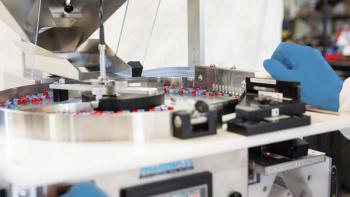
Milestones to celebrate, futures to build
Shimadzu celebrates in 2020 its 50th anniversary in mass spectrometry. The company offers a comprehensive range of products and has significantly driven this technology in recent years.
50 years of MS at Shimadzu
Milestones to celebrate, futures to build
Shimadzu celebrates in 2020 its
The development of Shimadzu’s first GC-MS is the result of cooperation with the Swedish LKB company: In 1970, the GCMS-9000 was introduced and launched on the international market. Further milestones followed; here are just a few examples out of 50 years of MS history:
- In 2002, the Shimadzu scientist KÅichi Tanaka was awarded the Nobel Prize in Chemistry, together with two other pioneers of science. He was recognized for the revolutionary MS procedures: Tanaka was the first scientist to apply the MALDI-TOF technique to proteins. His discoveries were instrumental for the commercial development of the MALDI-MS series Axima and Kompact.
- In 2008, Shimadzu received the ‘Product Line Strategy Award’ from Frost & Sullivan for its product line strategy in the MS segment consisting of MALDI-TOF, LC-MS and GC-MS systems.
- 2018: improved accuracy in the identification and quantification of even more chemical compounds: Shimadzu enhances its MS platform with the introduction of the LCMS-9030 system (Q-TOF). The quadrupole time-of-flight MS combines the world's fastest and most sensitive quadrupole technologies with a unique TOF architecture.
- 2019: The MALDI-8020 is perfectly suitable for quality control in the pharmaceutical industry, and for research and contract laboratories in science and industry. The linear benchtop MALDI mass spectrometer offers excellent performance needing a minimal footprint only. Well-designed, durable components make the system a robust and reliable platform that is easy to maintain.
Comprehensive product range
From single-quadrupole instruments for routine measurements, to triple-quadrupole systems for highest sensitivity in quantification, and up to high-resolution TOF instruments, mass spectrometry is ideal for the analysis of unknown substances. Shimadzu offers a wide range of products for various requirements:
- GC-MS
From robust single-quadrupole to ultra-fast and sensitive triple-quadrupole MS, Shimadzu provides the technologies R&D or routine laboratories need, including various sample introduction systems such as headspace, thermodesorption or pyrolysis.
- LC-MS
The LC-MS systems feature the highest scanning speeds and shortest polarity changes. They offer highest sensitivity, robustness and intuitive operation. The portfolio covers single quadrupole systems, triple quadrupole instruments, and high-resolution mass spectrometers.
- MALDI mass spectrometry
From simple linear TOF to high-end CID instruments, special applications are available, such as the iMScope Trio. The system combines an optical microscope with a MALDI-TOF. This unique coupling allows for the direct molecular analysis of high-resolution morphological images and identifies and visualizes the distribution of specific molecules.
- ICP-MS (Inductive Coupled Plasma Mass Spectrometry)
Element identification with highest sensitivity and lowest running costs. The line-up of accessories make the maintenance of the instrument and measurement in the ppt range easier than ever before.
Mass spectrometry today and in the future
Shimadzu supports laboratories and scientists with a variety of highly precise, fast, fully automated and environmentally friendly methods that can detect multiple parameters at lowest doses. Trends and future topics are also a major part. In addition to instrument miniaturization and automation, these are coupling technologies that drive the sensitivity and accuracy of analysis and measurements. Coupling technologies enable new applications that will be at the forefront of scientific research, but will also move into health centers - including projections of everyday applications in food retailing or the home environment as a technology that provides accurate data on personal health and food safety.
In combination with digital change as another powerful driving force of the future, coupling technologies are making ever more seamless processes possible and provide more accurate and faster measurements. These technologies are complementing each other as a catalyst for creativity and future possibilities.
For more information please click
Newsletter
Get the essential updates shaping the future of pharma manufacturing and compliance—subscribe today to Pharmaceutical Technology and never miss a breakthrough.

